Introduction
The oil and gas industry faces numerous challenges in traditional land management practices, including inefficiencies in data handling, delays in land access negotiations, and regulatory complexities. These issues are often exacerbated by the reliance on manual processes, leading to inaccuracies, increased costs, and extended project timelines. The lack of open and transparent land data further hampers the ability of governments and organizations to make informed decisions, complicating effective land management.
However, the adoption of digital solutions and specialized software has shown significant promise in mitigating these challenges. By enhancing data accuracy, streamlining administrative tasks, and incorporating advanced technologies such as AI and GIS, companies can achieve greater operational efficiency, improved asset management, and sustainable practices. This article delves into the various facets of oil and gas land management, exploring the benefits of digital transformation, the strategic importance of mineral rights management, and the future trends shaping the industry.
Challenges in Traditional Oil and Gas Land Management
'Conventional territory stewardship methods in the oil and gas sector are filled with difficulties such as ineffective information processing, delays in property access discussions, and intricacies in maneuvering through regulatory frameworks.'. The reliance on manual processes often results in inaccuracies, increased costs, and extended project timelines. 'As demonstrated by the Land Portal's initiatives, the absence of accessible and clear information regarding territory worsens these issues, hindering the capacity of governments and organizations to develop evidence-based policies and strategic responses.'. Moreover, the dynamic nature of property ownership and mineral rights further complicates effective management.
The adoption of digital solutions has proven beneficial, as evidenced by an international oil company that achieved a 21% reduction in man hours and a 10% improvement in production deferrals at an offshore site. These advancements underscore the importance of integrating multidisciplinary approaches, such as those highlighted in case studies from the Operators’ Forum, which demonstrate the value of combining geology, geophysics, and engineering to enhance asset value.
Furthermore, surveys indicate that regulatory uncertainties and inconsistencies are significant deterrents for investors, particularly in Canadian provinces where 68% of respondents expressed concerns compared to 41% in the United States. This emphasizes the necessity for uniform information and clear procedures to reduce these obstacles and simplify property acquisition processes.
In this era of rapid technological innovation, embracing digital transformation is crucial for the oil and gas industry. Resources such as the Open Up Guide for Land Governance and Land Voc are crucial for enhancing local capability, improving information literacy, and assisting governments and organizations in sustaining certainty and stability amidst changing demands.
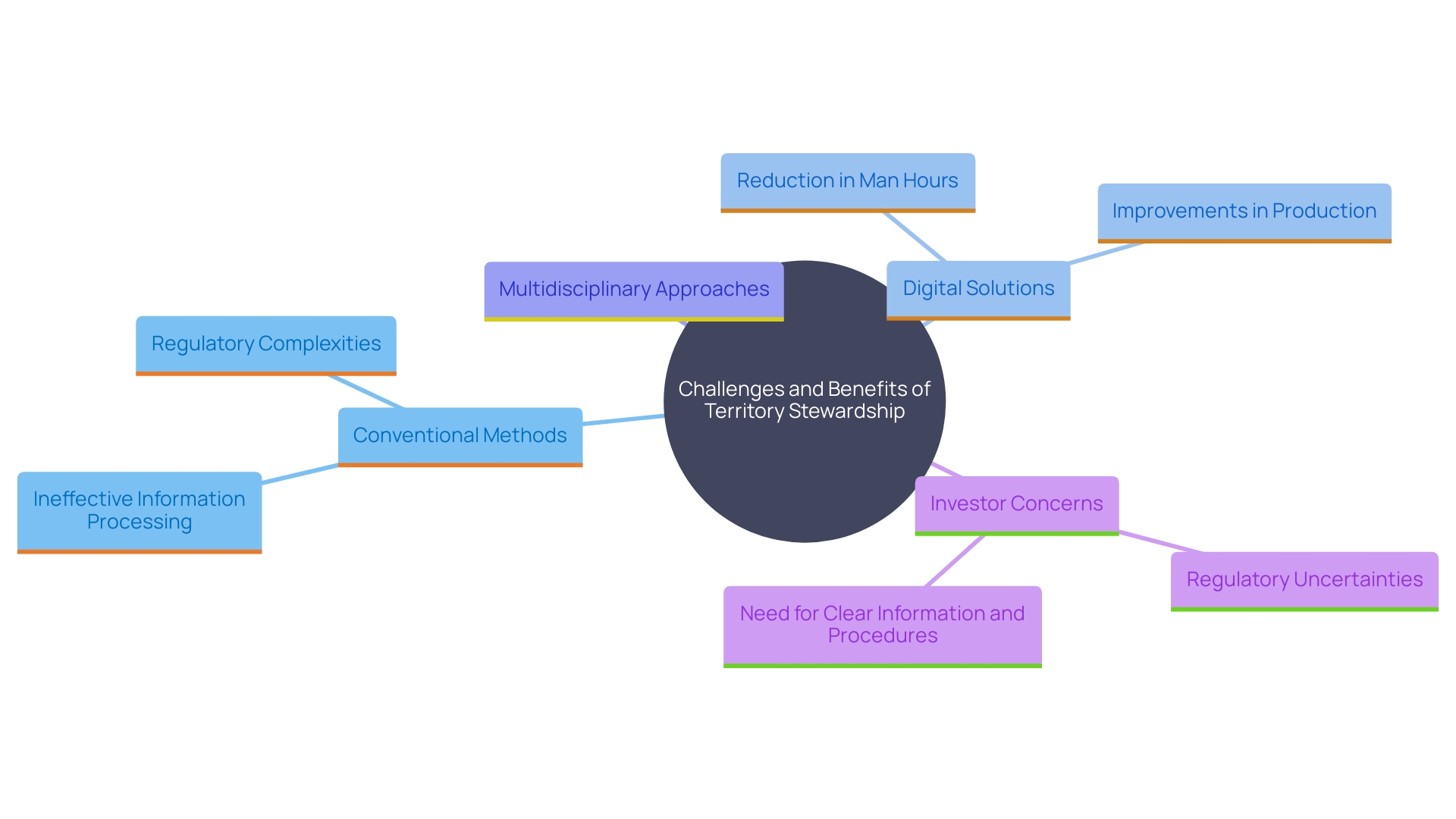
Benefits of Implementing Oil and Gas Land Management Software
Utilizing specialized terrain oversight software provides various advantages, particularly improving data precision and availability. These systems streamline the oversight of property rights, contracts, and obligations, aiding companies in maintaining tighter control over their assets. The integration of automated processes significantly cuts down on administrative tasks, freeing up teams to concentrate on strategic initiatives and decision-making. For instance, platforms like Northspyre have been instrumental in reducing development costs by providing visibility into areas where savings can be made, as highlighted by Theresa Leslie from Newell Development. In another case, Redesign, Inc. saw a marked improvement in efficiency after transitioning from cumbersome spreadsheets to a more flexible and customizable software solution. Additionally, such software can result in substantial operational efficiencies, as evidenced by an international oil company that reported a 21% reduction in man-hours at an offshore site and a 10% improvement in production deferrals. These digital solutions not only enhance efficiency in asset and process oversight but also contribute significantly to operational safety.
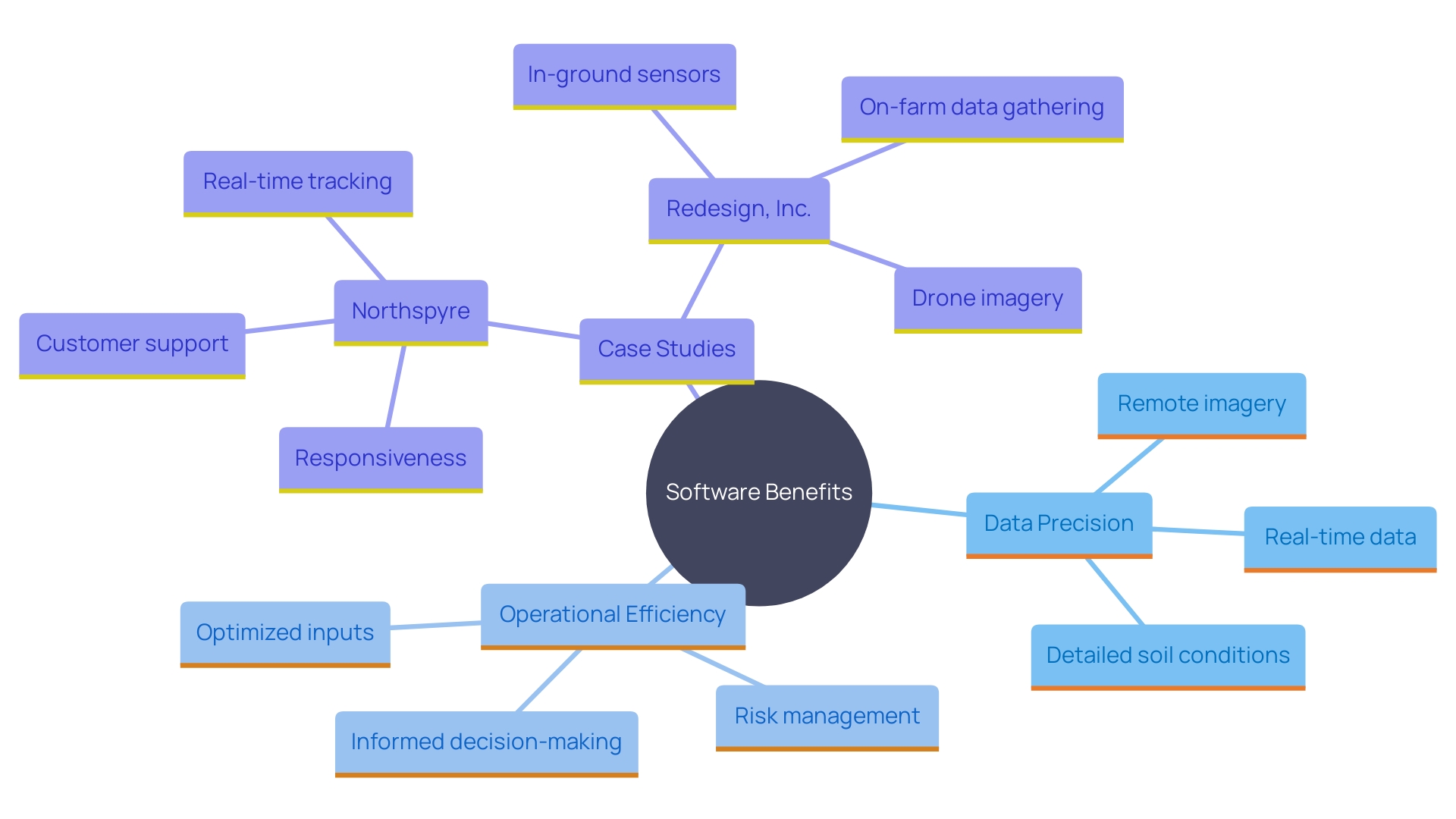
Core Features of Oil and Gas Land Management Software
Key features of oil and gas property management software encompass comprehensive lease tracking, GIS mapping capabilities, document management, and automated reporting. These functionalities enable the efficient visualization of land information, allowing users to make well-informed decisions based on real-time insights. For instance, Northspyre’s integration within projects has showcased significant improvements in managing real estate developments by providing up-to-the-minute information and holistic budget tracking. This has empowered teams to identify cost-saving opportunities and manage potential risks effectively. 'According to Andy Hestness, Executive Director of Redesign, Inc., the transition to Northspyre from traditional methods like spreadsheets has drastically improved efficiency and information usability.'. Furthermore, user-friendly interfaces and customizable dashboards greatly enhance the overall user experience and operational efficiency, as highlighted in collaborations between leading technology providers like GDi and Oceaneering. These advancements in digital asset oversight emphasize the critical role of technology in transforming and sustaining asset-heavy industries.
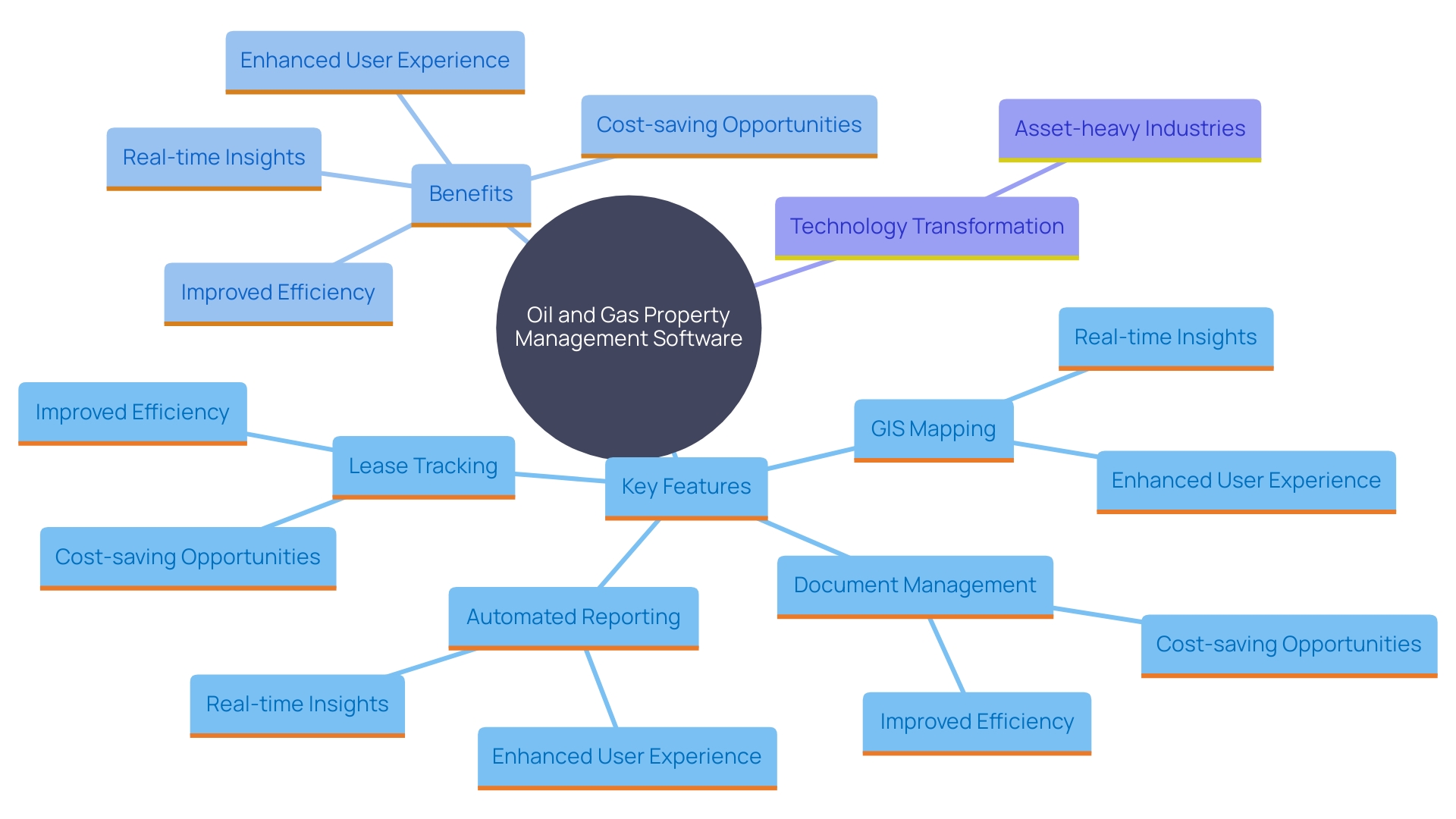
The Role of Automation and AI in Oil and Gas Land Services
Automation and artificial intelligence (AI) are transforming services in the oil and gas sector by significantly enhancing data processing capabilities and predictive analytics. Advanced AI-driven tools analyze extensive datasets to identify trends and potential issues, facilitating proactive oversight of land resources. For instance, Wintershall Dea's application of AI in maintaining the integrity of gas and oil wells in Norway showcases the importance of early detection in preventing major problems. This shift from conventional methods to technology-first approaches is crucial, as highlighted by Muhammad Buldansyah, who emphasized the necessity of technological innovation for maintaining competitiveness in the dynamic oil and gas sector. By leveraging AI, companies can modernize emissions detection, transitioning from manual routines to advanced solutions that minimize risks and increase efficiency. Ai's role in geospatial analytics, such as detecting methane leaks and other emissions, further underscores its impact on reducing environmental hazards. Ultimately, these advancements not only streamline operations but also support sustainable and responsible energy production.
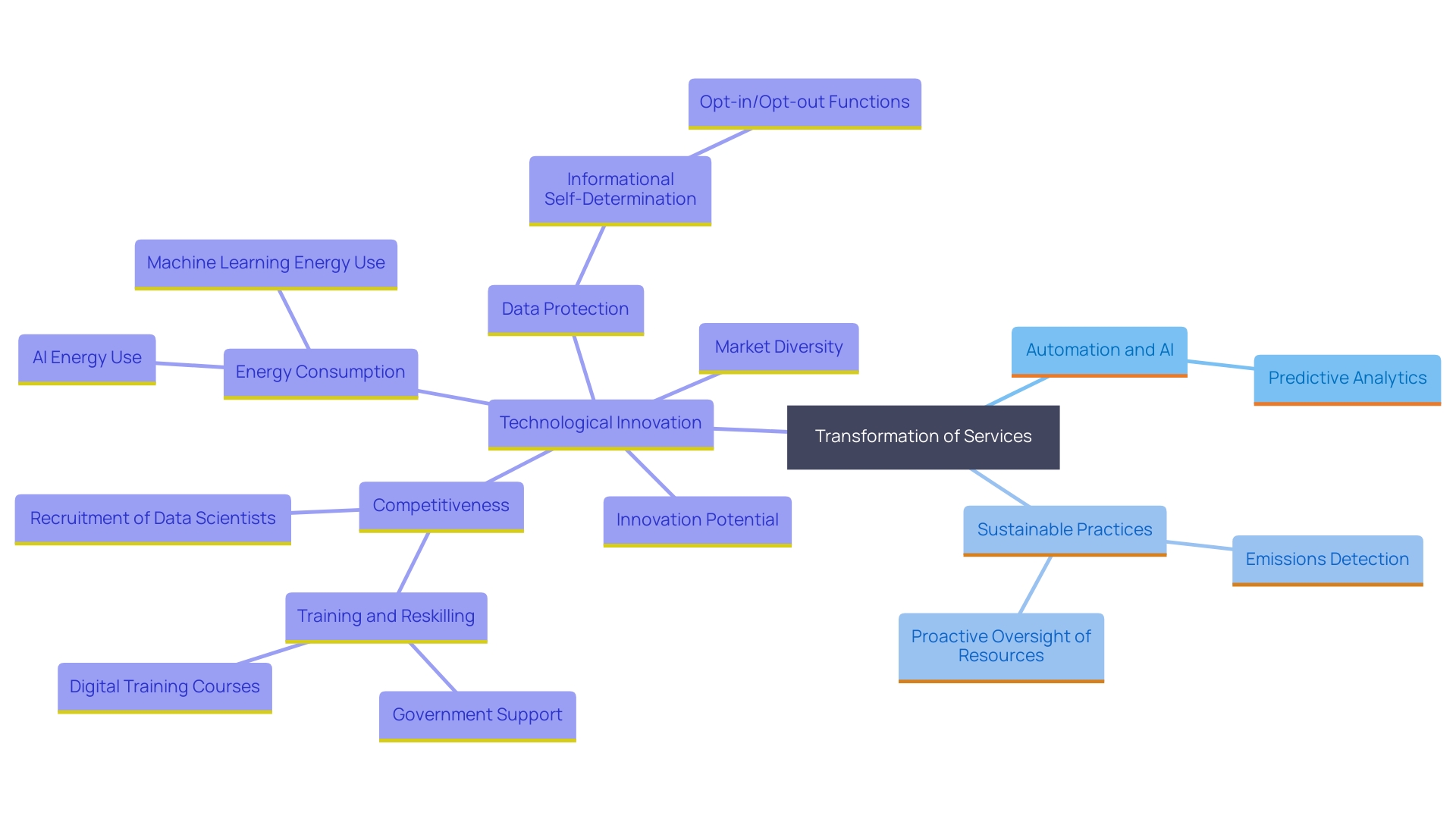
Strategic Importance of Mineral Rights Management
Effective mineral rights oversight is essential for optimizing resource extraction and adhering to legal regulations. Companies must navigate a complex landscape of ownership rights, leases, and royalties to ensure smooth operations. A strategic approach to managing these rights not only maximizes revenue potential but also mitigates disputes and legal challenges.
In Texas, the legacy of mineral rights ownership dates back to the 1866 state constitution, which firmly established privately held mineral rights. This historical context has allowed Texans to access valuable mineral and hydrocarbon reserves beneath their properties for over 150 years. Mineral rights can be severed from surface rights, leading to distinct property rights known as the mineral estate and the surface estate. These can even be subdivided into fractional shares, adding another layer of complexity.
Technological innovations are also playing a significant role in improving the sustainability and efficiency of mining operations. Advanced techniques such as precision drilling improve targeting accuracy, while innovations in waste and water oversight contribute to environmental protection. As the demand for metals and minerals grows, sustainable extraction methods will be crucial for a successful energy transition.
Furthermore, the legal landscape continues to evolve. For instance, Colorado's Supreme Court recently reviewed the doctrine of the 'centerline presumption,' which extends ownership to the middle of an adjacent right-of-way, highlighting the importance of staying updated with legal precedents to avoid litigation.
Incorporating best practices and promoting sustainable activities are also critical. Events like GeoPark's annual suppliers meeting in Colombia facilitate the exchange of best practices among industry leaders, helping to identify opportunities for safe and sustainable operations.
Ultimately, effective mineral rights management requires a blend of historical knowledge, legal acumen, and technological innovation to navigate the complexities and maximize the potential of these valuable resources.
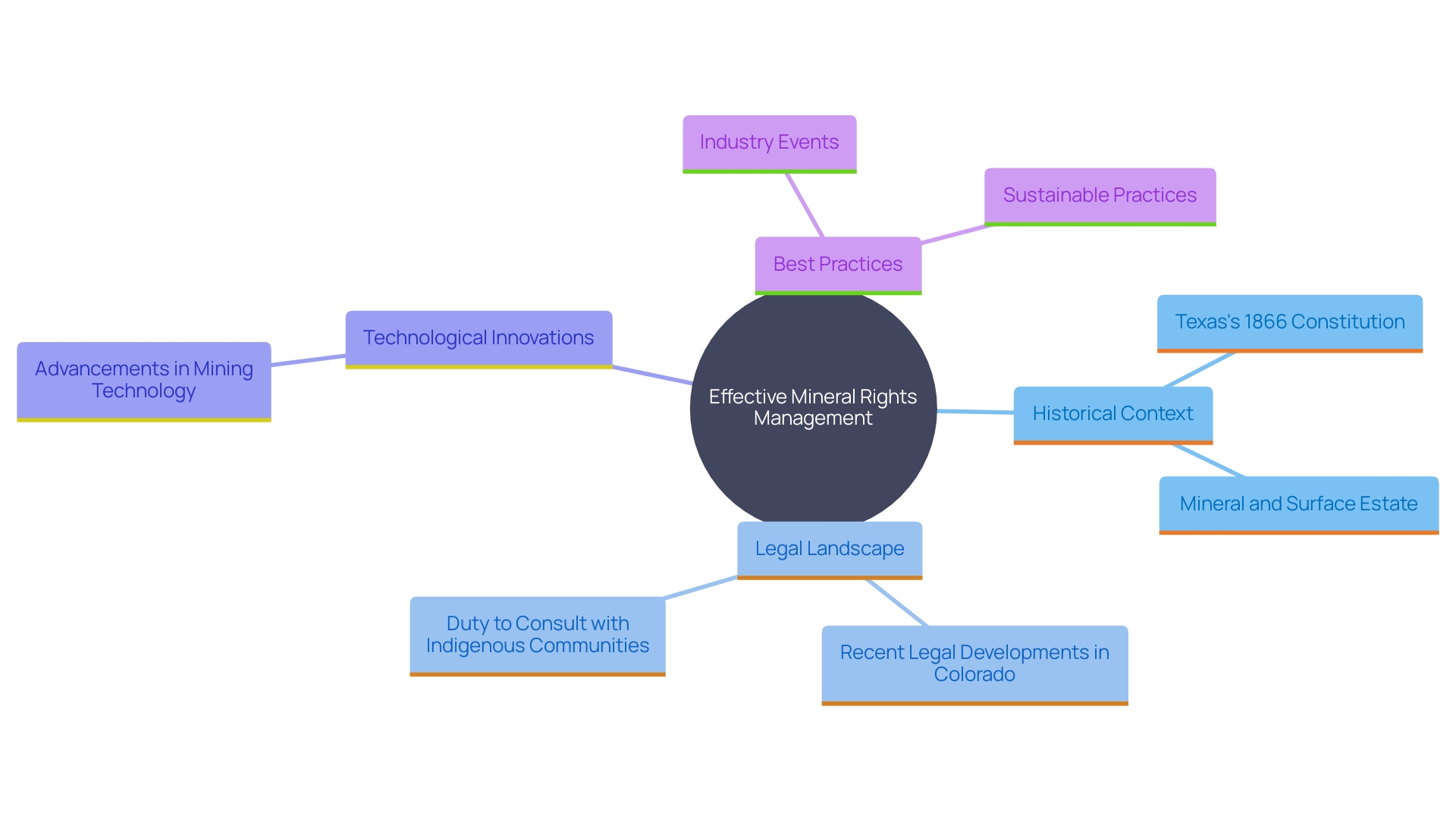
Streamlining Land Access and Obligation Management
Enhancing access to territory is crucial for successful development projects in the oil and gas industry. Effective negotiation and securing of property rights require clear communication channels with stakeholders, minimizing delays in approvals. According to recent studies, permitting review timelines can average up to 4.3 years, highlighting the need for a streamlined process. A comprehensive approach that includes effective obligation management ensures that all contractual commitments are met, thus reducing the risk of penalties and fostering positive relationships with landowners.
Strategic policies and practical strategies are essential for government negotiators to manage the risks involved in contract negotiations. For instance, model contracts can help narrow the scope of negotiations, making the process more efficient and less controversial. 'Recent legislative reforms, as seen in the Fiscal Responsibility Act, aim to enhance the federal permitting and environmental review process, reflecting a bipartisan commitment to more efficient access procedures.'.
Additionally, local and community-based approaches have proven effective in other sectors, such as watershed agreements, which are funded through local government investments and contributions from stakeholders. These agreements are flexible and tailored to local needs, reducing conflicts and promoting shared responsibility. 'This model can be adapted to property acquisition in the oil and gas industry to ensure that agreements are relevant and beneficial to all parties involved.'.
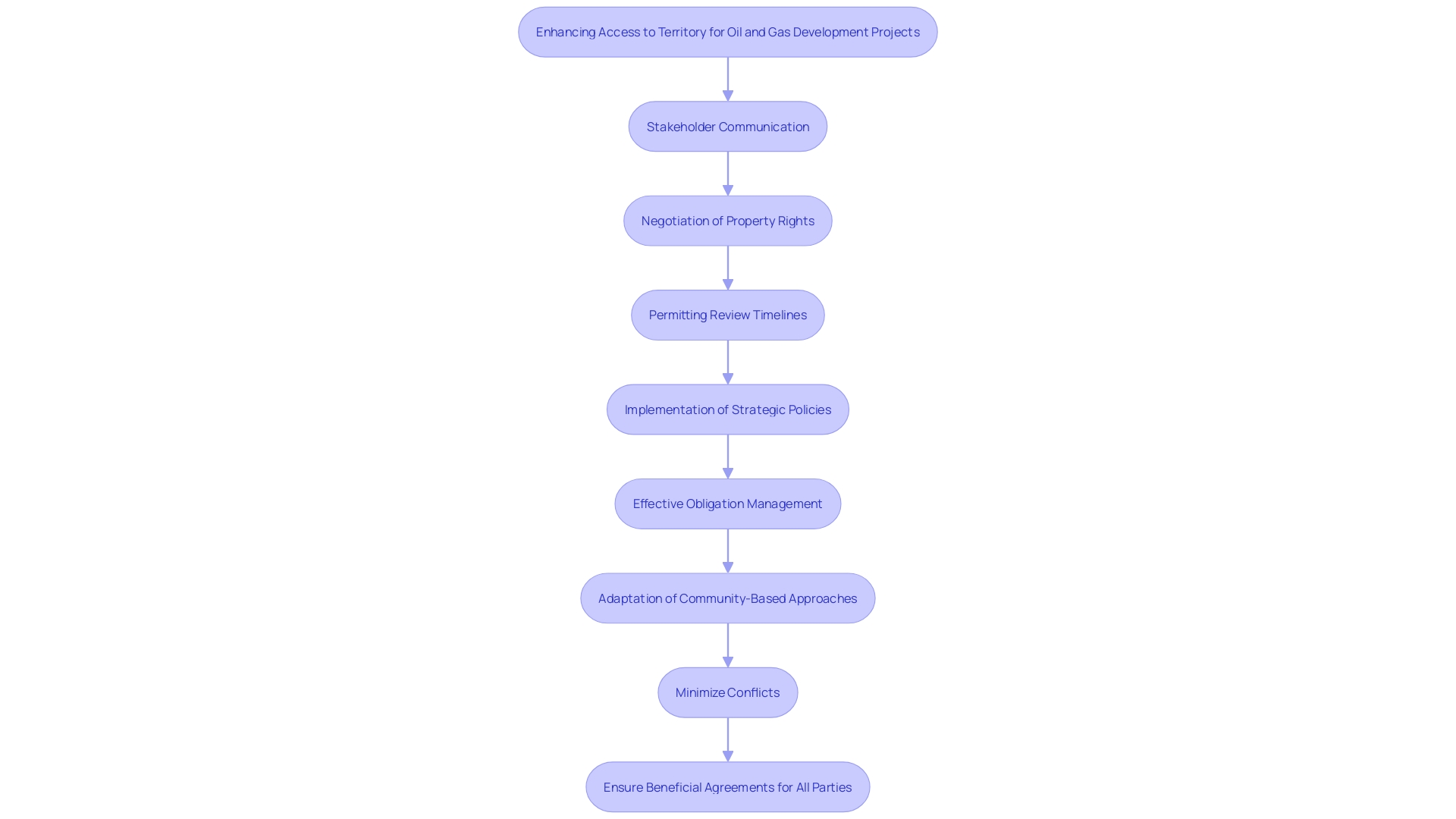
Leveraging GIS and Mapping Capabilities for Enhanced Land Management
Geographic Information Systems (GIS) have become essential in contemporary resource management, providing advanced spatial analysis and mapping tools. These capabilities empower organizations to visualize property ownership patterns, environmental constraints, and infrastructure developments comprehensively. By utilizing GIS, companies can make data-driven decisions that optimize resource use and enhance operational planning. For instance, the Land Portal's Open Up Guide for Land Governance and the Land of tools aim to promote open information literacy and standardize land governance vocabulary, making information more discoverable and useful. In addition, GIS applications can support sustainable urban development by providing insights into air quality and green spaces, ultimately contributing to public health improvements. Advanced information analytics and robust statistical analysis of field information, such as soil characteristics, further underline the importance of GIS in informed decision-making. As pointed out by experts, 'Spatial information are key ingredients for spatial analysis.'. Without suitable and well-managed spatial data, a GIS cannot exert its full power.' Thus, GIS not only facilitates efficient resource management but also plays a crucial role in addressing broader environmental and societal challenges.
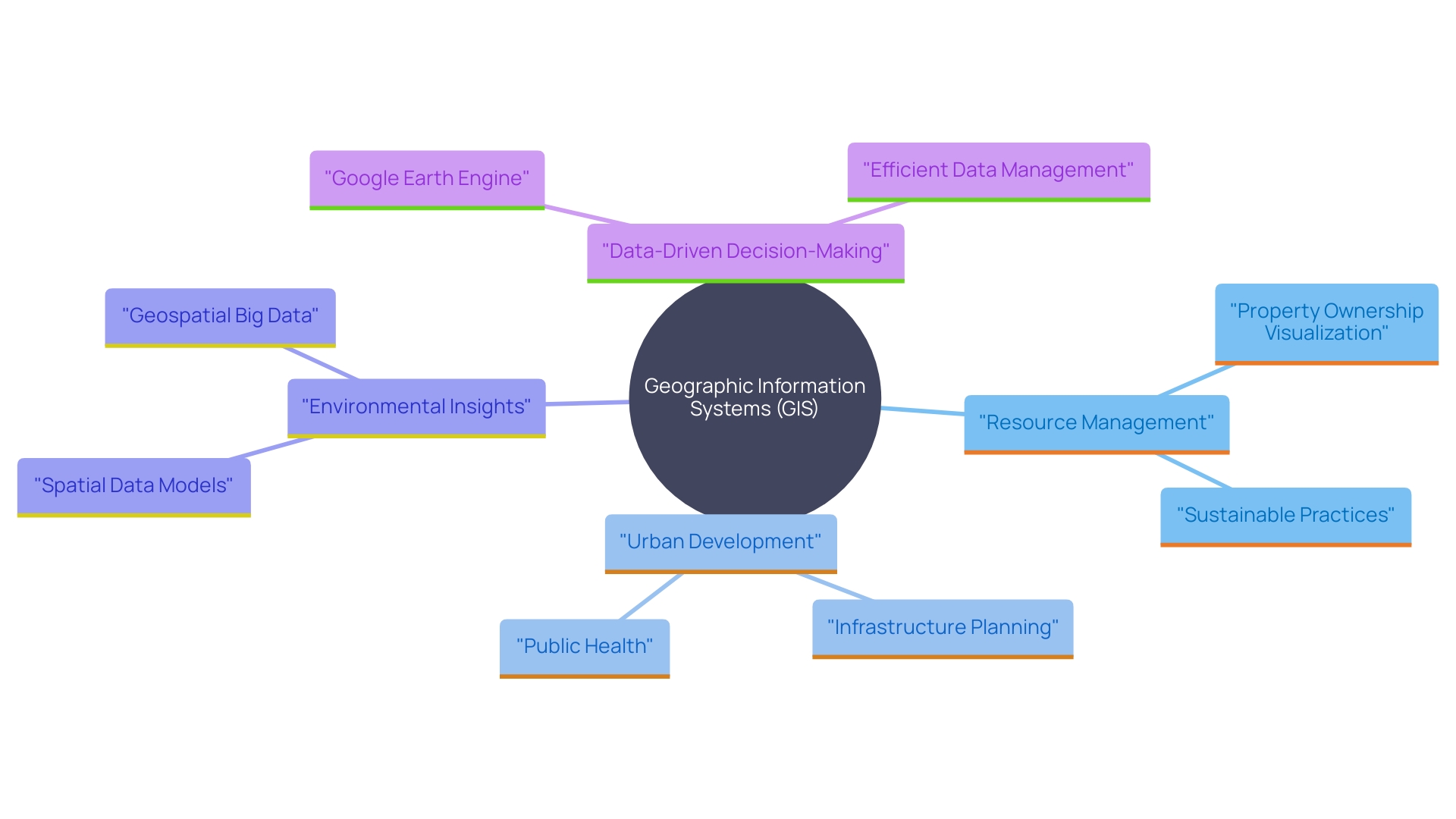
Future Trends in Oil and Gas Land Services
The future of oil and gas land services is poised to be heavily influenced by technological advancements and sustainability initiatives. Emerging technologies such as Artificial Intelligence (AI), machine learning, and blockchain are revolutionizing the sector. Companies are increasingly adopting AI and machine learning to enhance efficiency in drilling operations, predict equipment failures, and improve overall production rates. For instance, Hilcorp Energy Co. has leveraged machine learning to prevent significant gas production losses by predicting equipment failures, ultimately optimizing workforce deployment.
Blockchain technology is also making inroads within the industry. The recent partnership between the Cardano Foundation and Petrobras aims to educate and promote the adoption of blockchain technologies, highlighting its potential for secure transactions and enhanced data sharing.
Sustainability is becoming a cornerstone of the industry's evolution. Despite the inherently non-sustainable nature of oil and gas extraction, companies are implementing environmental practices to reduce their ecological footprint. Advanced AI and machine learning are not only improving operational efficiencies but also contributing to sustainability efforts by optimizing resource use and minimizing waste.
As the oil and gas industry navigates these rapid changes brought about by the Fourth Industrial Revolution, adaptability to new technologies and sustainable practices will be essential in maintaining a competitive edge. This fusion of physical, digital, and biological technologies holds immense potential to address global challenges such as climate change and resource management, driving the industry towards a more efficient and sustainable future.
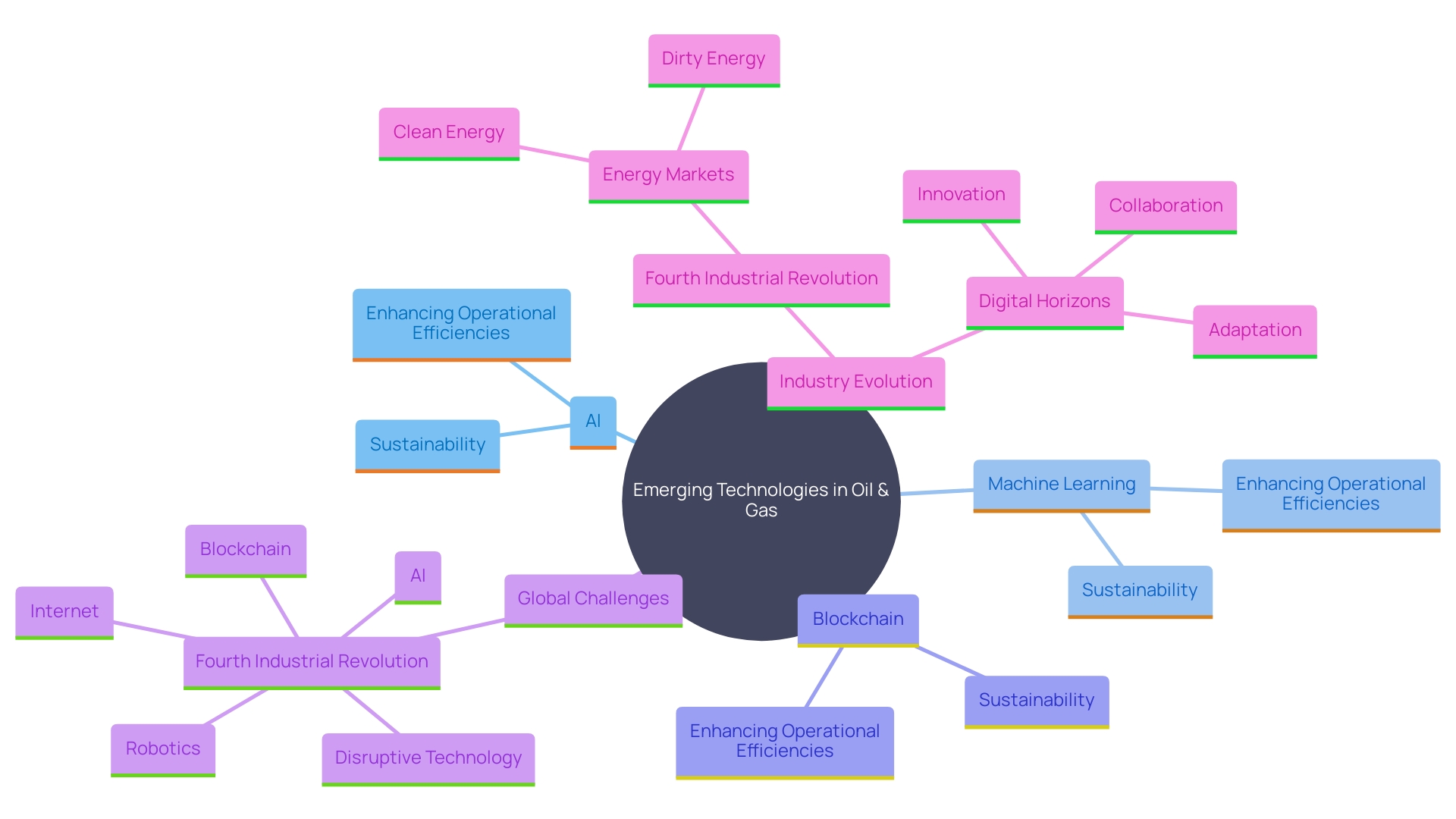
Conclusion
The oil and gas industry faces critical challenges in traditional land management, such as inefficient data handling, regulatory complexities, and delays in land access. These issues are often exacerbated by reliance on manual processes, leading to inaccuracies and higher costs. Digital solutions, including specialized land management software and technologies like AI and GIS, offer significant opportunities to enhance operational efficiency and asset management.
Specialized software streamlines administrative tasks and improves data accuracy, enabling better control over assets. Features like lease tracking and automated reporting facilitate informed decision-making. The integration of automation and AI further enhances data processing, allowing for proactive management and reduced operational risks.
Effective mineral rights management is crucial for optimizing resource extraction and compliance with legal requirements. Navigating the complexities of ownership rights necessitates a combination of historical insight and technological innovation. Additionally, streamlining land access and obligation management is essential for minimizing delays and fostering positive relationships with landowners.
As the industry evolves, leveraging GIS and mapping capabilities will improve land management through comprehensive spatial analysis. The future of oil and gas land services will be driven by technological advancements and sustainability initiatives, with AI, machine learning, and blockchain playing vital roles. Adapting to these changes while implementing sustainable practices is essential for maintaining competitiveness and steering the industry toward a more efficient and sustainable future.




